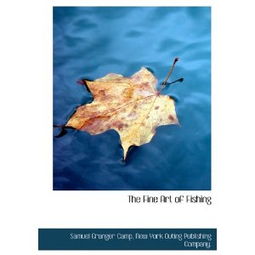Content:
Fishing in large rivers can be an exhilarating experience, offering anglers the chance to catch a variety of fish species. However, fishing in these vast water bodies can also be challenging. To maximize your chances of success, it is essential to master the art of fishing in large rivers. In this article, we will discuss some essential techniques that can help you become a proficient angler in large rivers.
Choose the Right Equipment

The first step in fishing in large rivers is to choose the right equipment. Here are some essential gear items to consider:
a. Rod and Reel: A sturdy rod and reel combination is crucial for handling the strong currents and large fish in large rivers. Choose a rod with a strong backbone and a reel with a reliable drag system.
b. Line: Use a monofilament line with a breaking strength of at least 10-15 pounds. This will provide enough strength to handle the currents and the fish you are targeting.
c. Lures and Baits: The type of lure or bait you choose will depend on the fish species you are targeting. For example, if you are fishing for bass, consider using spinnerbaits, crankbaits, or jigs. For catfish, live bait such as shad or nightcrawlers can be effective.
Learn the River's Habitat
Understanding the river's habitat is crucial for successful fishing in large rivers. Here are some key points to consider:
a. Currents: Large rivers have strong currents, which can make it challenging to fish effectively. Learn the flow of the river and fish areas where the current is slower, such as pools, eddies, and backwaters.
b. Structure: Large rivers are characterized by various structures, such as rocks, logs, and submerged trees. These structures can provide excellent fishing spots for fish looking for cover. Target these areas when fishing in large rivers.
c. Depth: Fish in large rivers can be found at various depths. Use a depth finder to locate fish and adjust your bait presentation accordingly.
Adjust Your Bait Presentation
Fishing in large rivers requires a different approach to bait presentation compared to smaller streams. Here are some tips:
a. Work the Bait Slowly: In strong currents, fish may not be as active as they are in still water. Work your bait slowly and give it time to reach the fish.
b. Use a Variety of Techniques: Experiment with different techniques, such as casting, flipping, and dragging, to cover more water and reach different fish-holding areas.
c. Pay Attention to the Weather: Wind and weather conditions can affect the fish's behavior in large rivers. Fish may be more active on overcast days or during windy conditions.
Locate the Fish
Locating fish in large rivers can be challenging. Here are some tips to help you find fish:
a. Use a Fish Finder: A fish finder can help you locate fish in the river and provide valuable information about their depth and location.
b. Observe the Water: Look for signs of fish activity, such as splashes, bubbles, or fish rising to the surface.
c. Consult Local Knowledge: Talk to other anglers who fish the river and gather information about the best spots to fish.
Be Patient and Persistent
Fishing in large rivers can be unpredictable. Be patient and persistent, and don't get discouraged if you don't catch fish immediately. Fish may be more active at different times of the day or under different weather conditions. Keep experimenting with your techniques and locations until you find success.
In conclusion, fishing in large rivers can be a rewarding experience for anglers who are willing to learn and adapt. By choosing the right equipment, understanding the river's habitat, adjusting your bait presentation, locating the fish, and being patient, you can improve your chances of catching fish in large rivers. Happy fishing!












